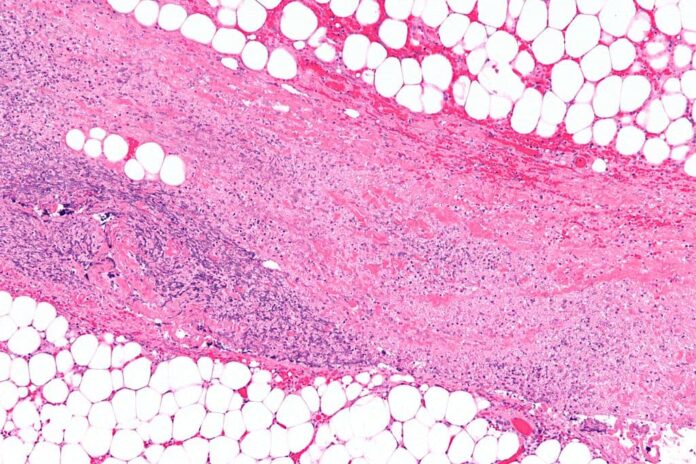Flesh-eating disease is a deadly infection that results in the death of some parts of the body’s soft tissue. The dangerous thing about this infection is that it spreads very fast after showing some symptoms. Although rare, necrotizing fasciitis can cause death without immediate and proper treatments. There have been at least 1,000 cases of necrotizing fasciitis occurring every year in the United States alone. Below is some basic information about necrotizing fasciitis, so let’s take a look.
1What Is Necrotizing Fasciitis?
Flesh-eating disease has been around for so long, and it has been described as early as the 5th century. According to the writing of Hippocrates, some people had necrotizing fasciitis at the time. Then, it appeared again on over 2,000 soldiers during the Civil War. In the United States, cases of flesh-eating diseases are generally infrequent such as a small epidemic in 1996. There are many bacteria strains that can cause necrotizing fasciitis, but the most common one is a bacterium called Group A Strep. It causes scarlet fever, rheumatic fever, and strep throat, but spreading necrotizing fasciitis is rare.
Another bacterium is Vibrio, and these bacteria can live in hot tubs, lakes, oceans, and swimming pools. This bacterium associates with the summertime seawater exposures of flesh-eating bacteria that are occurring lately. People can contract vibrio from brackish or salt water as well as from eating raw or undercooked shellfish. However, both bacteria cause extensive tissue damage by destroying tissues under the skin and around the body’s organs and muscles.
2Causes
Both types of bacteria we mentioned above can cause an infection to enter the system through breaks in a person’s skin. The break in the skin can be as small as an insect bite or scrape, but larger cases are also possible. On top of that, the bacteria can also enter the body through abrasions, burns, and other puncture injuries or wounds. Generally, an infection begins at a surgical wound or because of accidental trauma. In some cases, there is not even an obvious break in the skin at all. Along with fever and swelling, the infected area can become tight and discolored which leads to severe pain. Although the infection is rare, it is life-threatening once it happens.
3Symptoms
Necrotizing fasciitis bacteria can spread very fast, and the first sign is an increasingly large presence of red or swollen skin. At the same time, the red skin will be painful while this appearance is followed by a fever shortly after. As the bacteria make its progress, infection like blisters, black spots, and ulcers will appear under the skin. Even worse, the presence of pus oozing from the infected area will start as well. During this time, the patient will feel dizzy, fatigued, and nauseous along with intense thirst due to hydration.
Symptoms of the flesh-eating disease usually occur after an injury or surgery. The symptoms can be more serious for people with impaired immune systems like those with cancer or uncontrolled diabetes. Along with them, people who have a variety of autoimmune conditions are also more likely to contract flesh-eating bacteria. Those include people with liver disease and people who had organ transplants. Because of their weak immune system, the risks of developing serious infections are also more possible. However, anyone can get the disease without proper wound care.
4Treatments
Necrotizing fasciitis is a treatable disease, and there are certain bacterial strains that can cause flesh-eating diseases and infections. Once diagnosed on time, there are two treatment methods which are antibiotics and surgery.
Antibiotics
For early infections, antibiotics will prevent the further spread of the infection to healthy tissues. If the dead tissue causes a lack of blood flow that makes antibiotics impossible, we proceed to the next method.
Surgery
In case the infection has killed too much tissue, there will be surgery to remove dead tissues to prevent it from spreading. As for more serious cases, the patients may need a blood transfusion along with multiple surgeries to get rid of necrotizing fasciitis successfully.
5Prevention
There is no vaccine to prevent the flesh-eating disease available at the moment. Easy and simple, good wound care habits can prevent necrotizing fasciitis. To prevent the infection, you should wash minor cuts with soap and running water to get rid of bacteria. If you have an open wound, make sure to avoid going in the water like a lake, river, or sea. In case you want to, it is compulsory to completely rinse off the wound and wash yourself with soap. After that, keep track of your skin to see if there are any unusual changes or sores, especially near the wound. Those who have a compromised immune system have to be extra careful with their wounds. So if you notice that the redness around the cuts begins to spread rapidly, seek medical attention immediately.
Related Post: Dangerous Diseases That Can Kill You Within 24 Hours




